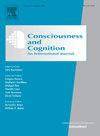拓展自动符号定向的极限。
IF 2
3区 心理学
Q2 PSYCHOLOGY, EXPERIMENTAL
引用次数: 0
摘要
箭头会触发注意力的反射性转移,是自动符号定向的典型实例。我们进行了四项实验来进一步检验这一现象的边界条件。参与者在辨别一个外围目标时,定点处会出现指向左侧或右侧的无空间信息的箭头。在所有实验中,箭头方向既可以随机变化(混合条件),也可以在一个试验块内保持不变(阻断条件)。此外,在实验 3 和实验 4 中,试验开始时会出现一个方向词,以 100% 的确定性告知参与者目标位置。总之,实验结果表明,在阻断条件和混合条件下,箭头驱动的定向效应都很明显。本研究结果支持这样一种观点,即自动符号定向对抑制具有抵抗力,因为即使在强调箭头不具信息性的情境中,同时也创造了理想的条件来增强参与者忽略箭头的倾向时,自动符号定向仍会持续。本文章由计算机程序翻译,如有差异,请以英文原文为准。
Stretching the limits of automated symbolic orienting
Arrows trigger reflexive shifts of attention and instantiate the prototypical example of automated symbolic orienting. We conducted four experiments to further test the boundary conditions of this phenomenon. Participants discriminated a peripheral target while spatially uninformative arrows, pointing leftwards or rightwards, appeared at fixation. In all experiments, arrow direction could either randomly vary (intermixed condition) or be kept constant within a block of trials (blocked condition). Moreover, in Experiments 3 and 4, a direction word presented at the beginning of the trial informed participants about the target location with 100% certainty. Overall, the results highlighted a significant arrow-driven orienting effect in both the blocked and the intermixed conditions. The present findings support the notion that automated symbolic orienting is resistant to suppression in that it endures even when the context should stress the uninformative nature of the arrows while also creating ideal conditions to boost participants’ tendency to ignore them.
求助全文
通过发布文献求助,成功后即可免费获取论文全文。
去求助
来源期刊

Consciousness and Cognition
PSYCHOLOGY, EXPERIMENTAL-
CiteScore
4.30
自引率
8.30%
发文量
123
期刊介绍:
Consciousness and Cognition: An International Journal provides a forum for a natural-science approach to the issues of consciousness, voluntary control, and self. The journal features empirical research (in the form of regular articles and short reports) and theoretical articles. Integrative theoretical and critical literature reviews, and tutorial reviews are also published. The journal aims to be both scientifically rigorous and open to novel contributions.
 求助内容:
求助内容: 应助结果提醒方式:
应助结果提醒方式:


